In London during the early 1760s small, rectangular, five octave keyboard instruments started to be produced. Unlike the harpsichord or spinet, these were capable of playing both loudly and softly – the forte piano or fortepiano. The demand for these small square pianos was enormous, and manufacturers began producing instruments in quantity.
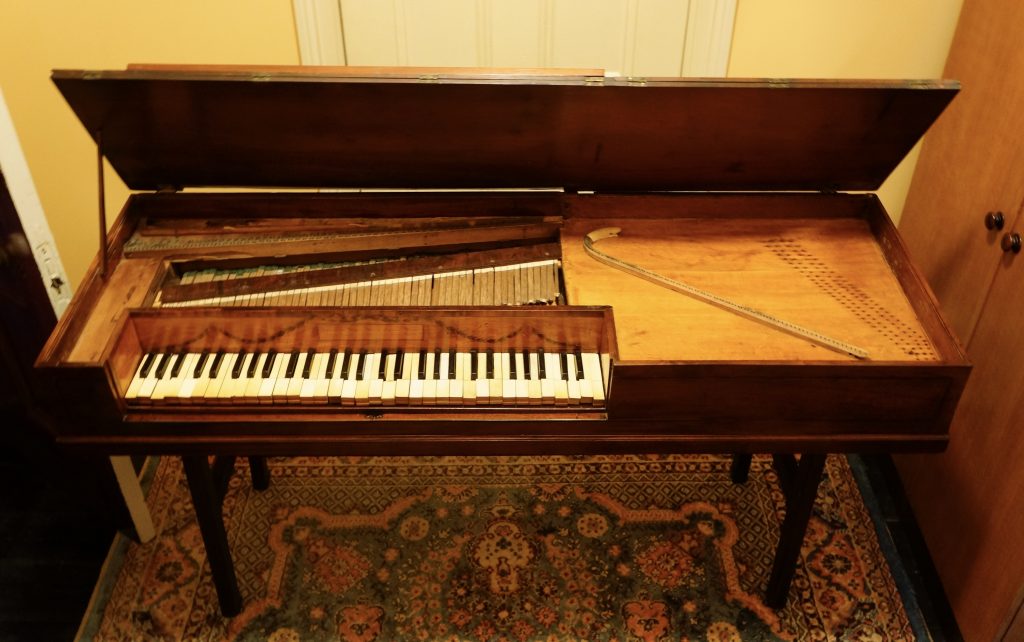
This square piano produced by Longman & Broderip may be the one Surgeon Worgan brought with him on the First Fleet and gave to Elizabeth Macarthur when he left the colony.
George Worgan, a surgeon on the First Fleet HMS Sirius, brought a piano with him to Australia. Although this may seem remarkable, music, song and dance were daily occurrences at all levels of society, even aboard ships of the British Navy. George inherited his enthusiasm for music from his father, Dr John Worgan, a respected organist and composer who also played at the Vauxhall Gardens, and insisted on his children having a sound musical education no matter which profession they intended to enter. A leading musician in London, John Worgan [1724-1790] had a doctorate of music from Cambridge University and was a close friend of George Frederick Handel [1685-1759] – a friendship which would have influenced George Worgan’s choice of music. The Broadwood Piano Archives record that a Mr Worgan purchased one of their early square pianos on 10th April, 1783 – it is most likely this was the piano George brought with him to the colony.
A wide range of music was available from the classical piano repertoire of Mozart, Haydn and early Beethoven, through to Scottish music (the rage at the time), and lighter pieces such as sonatas, duets, waltzes, operatic airs and parlour songs. During the long voyage to New South Wales, George gave concerts on board the Sirius and subsequently provided a very considerable branch of [polite] society” in the fledgling settlement. It has been suggested that the first piano may have supplied the music for the first play staged in Sydney, The Recruiting Officer.
The early pianos were actually oblong rather than square and were sometimes called box or table pianos. Small and charming, they sounded as much like a harpsichord as a modern piano; the innovation being that the strings were struck rather than plucked.
In 1791, after several years residence in the colony, Worgan departed, leaving the precious instrument with his friend, Elizabeth Macarthur, wife of Lieutenant John Macarthur of the New South Wales Corps.
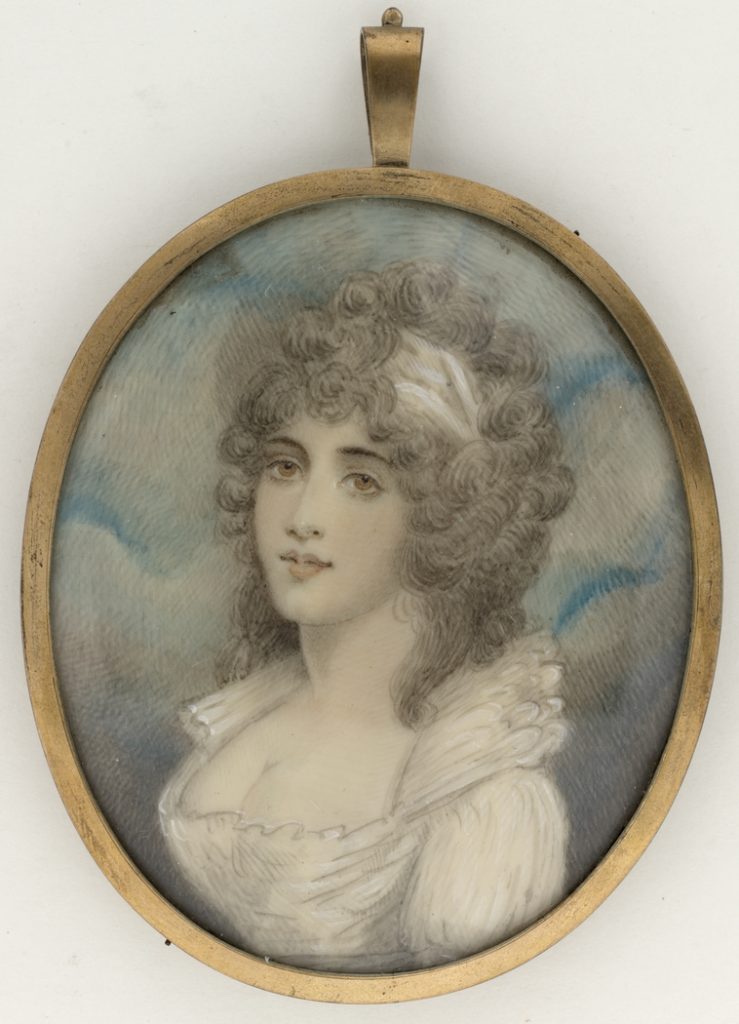
Reputedly Elizabeth Macarthur, 1785-1790 – Watercolour on Ivory Miniature. (1785). Dixson Library, State Library of New South Wales
Elizabeth is regarded as the first educated English gentlewoman to arrive in Australia, she arrived with the Second Fleet in 1790 and played a crucial role in the elite social life of the early colony. Being a cultivated lady, Elizabeth would have been familiar with the minuet as a dance and this instilled sense of rhythm would have greatly assisted her in learning the tune Foote’s Minuet.
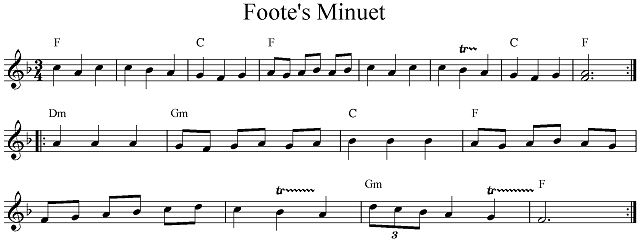
Two manuscripts with Foote’s Minuet are available in the Woodriff papers, National Library of Australia.
Listen to Foote’s Minuet Arranged by Roland Clarke
Download the pdf
Foote’s Minuet was the standard first piece, along with God Save the King, in almost all music tutors from 1760-1810.
It was not long before more pianos were arriving in the colony: in 1803, a piano forte was advertised for sale in the Sydney Gazette for sixty guineas. In England, a plain square piano could be purchased for twenty-four guineas and was Broadwood’s most popular model. This raises the question of the price of the piano in the Sydney Gazette – was it a superior type of piano or was it simply the cost of importing such an item which increased the price? It is possible an elegant piano was desired to grace one of the grand mansions which were already established in the colony.
In 1809 Elizabeth Macquarie, wife of the newly appointed governor, also brought a Broadwood piano to the colony: a three pedal grand piano. This beautiful piano would have been at the cultural heart of the colony. Pianos became the focal point of British colonial drawing-rooms, the instrument of the middle class in the nineteenth century. They became an indicator of social success and settlers would go to great pains to transport pianos to the most distant outposts of the colony.
In 2016, a piano identified by Professor Geoffrey Lancaster as belonging to Surgeon Worgan, was donated to the Edith Cowan University in Perth by the collector Stewart Symonds. The university plans to restore the piano to a playable condition so it may be used by students and researchers. It will be sent to master restorers in London, who will also teach their techniques to Western Australian restorers.
However, there is another claimant to the famous piano. Phillip Barrow writes,
Whilst it cannot be categorically stated that this – nor any other pianos at this stage – is “the piano” brought to Australia by Surgeon George Worgan on the Sirius in 1788 and subsequently given to Elizabeth MacArthur when Worgan returned to England in 1791, this Longman & Broderip piano does come with provenance that points in that direction.
It was bought by the current owner in 1969 from the well respected Sydney Antiques Dealer, Bill Bradshaw. Mr Bradshaw had originally purchased the piano around 1947 from a property in Western Sydney where it was found in the laundry in fairly poor condition. The person from whom it was purchased in 1947 informed Mr Bradshaw that the piano had once been owned by Elizabeth MacArthur.
Some time prior to his death in 2009 Mr Bradshaw signed a document verifying that, to the best of his knowledge, this was the known provenance of the Longman & Broderip Square Piano, serial no: 604. This document is also in the possession of the current owner.
____________________________________________________________________________________________________________________________
Links
First Fleet piano part of a priceless collection donated to a Perth university. http://www.abc.net.au/news/2016-05-26/australias-first-piano-unveiled-at-wa-university/7449222 Accessed 27 May 2016.
Friends of Square Pianos http://www.friendsofsquarepianos.co.uk
______________________________________________________________
Sources
Bowes Smyth, Arthur. Journal of Arthur Bowes Smyth, Surgeon. Lady Penrhyn 1787-89 Australian Documents Library, Five Dock, NSW, 1979.
Broadwood Piano Archive. Surrey History Centre. Correspondence with Robert Simonson March-May, 2012. http://www.surreycc.gov.uk/recreation-heritage-and-culture/archives-and-history/surrey-history-centre/highlights-of-our-holdings-at-surrey-history-centre/john-broadwood-and-sons-piano-manufacturers/broadwood-piano-history-research
Clarke, Roland. Transcription of music from the original. 2010.
Goold, Madeline, Mr. Langshaw’s Square Piano. The Story of the First Pianos and How They Caused a Cultural Revolution. Bluebridge, New York, 2008.
Keller, Kate Van Winkle . Copy of original music from The Harpischord or Spinnet Miscellany. Robert Bremner 1765.
Kendal, Alan. Music. It’s Story in the West. Contact, London, 1980.
King, Jonathan. The First Fleet, 1982.
Lancaster, Andrew. Photograph and information regarding history of square pianos.
Macarthur, Elizabeth. The Journal & Letters of Elizabeth Macarthur 1789-1798. Historic Houses Trust of NSW, 1984.
The Sydney Gazette 17 July 1803.
Worgan, George Bouchier. Journal of a First Fleet Surgeon.
Worgan Family records. http://www.bikwil.com/Vintage40/Worgan-Family.html
_____________________________________________________________
The information on this website www.historicaldance.au may be copied for personal use only, and must be acknowledged as from this website. It may not be reproduced for publication without prior permission from Heather Clarke.
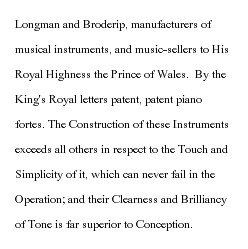
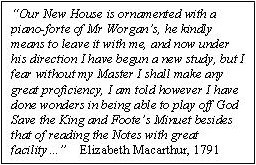


Pingback: Welcome – jayspyve
Pingback: Australian Colonial Dance – Michelle Scott Tucker